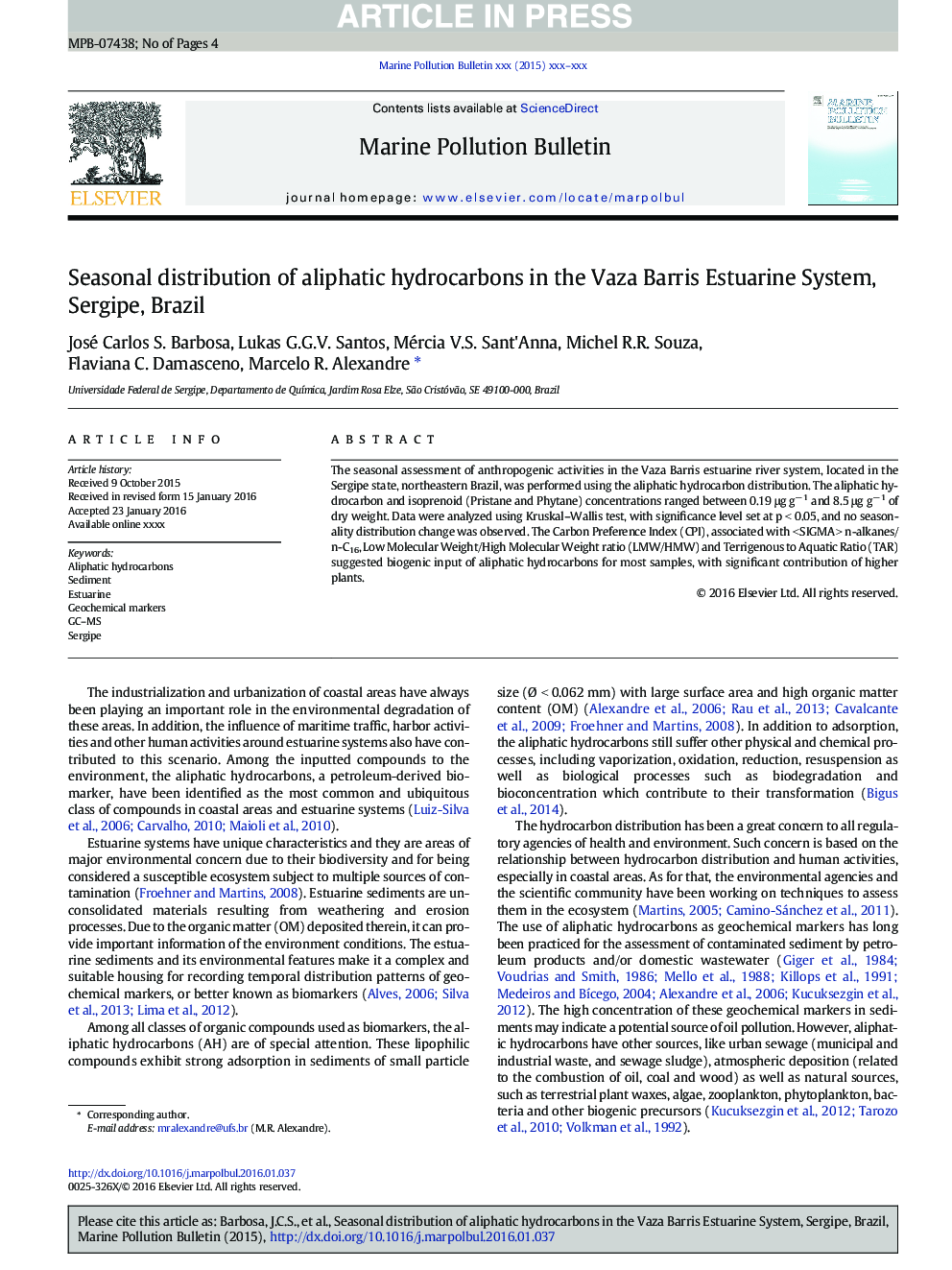| Article ID | Journal | Published Year | Pages | File Type |
|---|---|---|---|---|
| 6355887 | Marine Pollution Bulletin | 2016 | 4 Pages |
Abstract
The seasonal assessment of anthropogenic activities in the Vaza Barris estuarine river system, located in the Sergipe state, northeastern Brazil, was performed using the aliphatic hydrocarbon distribution. The aliphatic hydrocarbon and isoprenoid (Pristane and Phytane) concentrations ranged between 0.19 μg gâ 1 and 8.5 μg gâ 1 of dry weight. Data were analyzed using Kruskal-Wallis test, with significance level set at p < 0.05, and no seasonality distribution change was observed. The Carbon Preference Index (CPI), associated with < SIGMA > n-alkanes/n-C16, Low Molecular Weight/High Molecular Weight ratio (LMW/HMW) and Terrigenous to Aquatic Ratio (TAR) suggested biogenic input of aliphatic hydrocarbons for most samples, with significant contribution of higher plants.
Related Topics
Physical Sciences and Engineering
Earth and Planetary Sciences
Oceanography
Authors
José Carlos S. Barbosa, Lukas G.G.V. Santos, Mércia V.S. Sant'Anna, Michel R.R. Souza, Flaviana C. Damasceno, Marcelo R. Alexandre,
